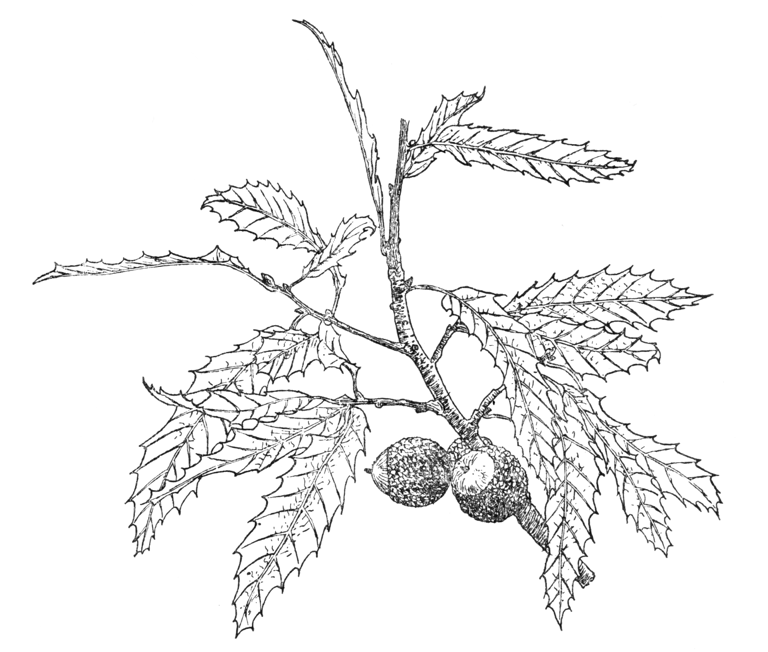A deciduous tree of elegant growth not apparently attaining to a great size; young shoots clothed at first with minute down. Leaves oblong-lanceolate, rounded at the base, tapered to a fine point, 2 to 4 in. long, 1⁄2 to 1 in. wide, dark glossy green above, paler green beneath; stalk about 1⁄2 to 3⁄4 in. long. On our cultivated trees the leaves soon become glabrous on both surfaces except for a few hairs on the midrib and veins, but on wild specimens the undersurface is frequently thickly covered with down. Springing from each side the midrib at an angle of 450, and running out to the margin, where each forms the bristlelike point to a triangular tooth, are nine to twelve parallel veins. Fruits solitary or in pairs on a thick woody stalk 1⁄2 in. or more long, on which they ripen the second year; acorns about 1 in. long on cultivated trees and more than half enclosed in a large cup; lower scales ovate, the upper ones smaller and narrower.
Native of the mountains of Syria, including Mt Lebanon, and of Asia Minor and Kurdistan; introduced to Paris about 1855. Although the branches are slender and elegant they are scarcely pendulous on young trees. Acorns are frequently produced, but they do not become so large as those of some native trees. Among cultivated oaks this is most nearly allied to Q. trojana (macedonica), but in that species the crown is denser; the leaves thicker, with mucronate but not bristle-tipped teeth, and scarcely stalked; and the female flowers and the fruits are sessile (in Q. libani the female flowers are borne on a stout peduncle which becomes woody as the fruits ripen). In Q. acutissima the leaves are much larger and bright green.
Q. libani is not as common in gardens as it deserves to be. At Kew there are two specimens in the Oak collection: pl. 1883, 41 × 23⁄4 ft (1965), and pl. 1899, 48 × 51⁄4 ft (1967). Others recorded recently are: Wakehurst Place, Sussex, 45 × 4 ft (1965); National Pinetum, Bedgebury, pl. 1930, 50 × 31⁄4 ft (1971); Tortworth, Glos., pl. 1906, 68 × 61⁄2 ft (1964); Ryston, Norfolk, pl. 1909, 32 × 31⁄4 ft (1969); Edinburgh Botanic Garden, pl. 1903, 36 × 21⁄2 ft (1970).


